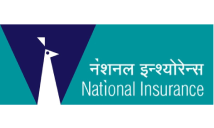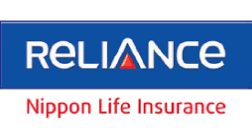
Children always hold a special place in your hearts. They are your bundle of joy and you try to bring your child up in the best possible way. That is why you choose the best education, the best clothes, the best food and also the best future for your child. Whatever you do for your child, it involves money. Whether you want your child to go to the best schools or have the best toys, you need money to fund your child’s dreams. Especially when your child wants to build a career for himself/herself you need sufficient funds for higher education. Given the rising cost of education, affording quality education for your child is tough. When it comes to higher education, the challenge becomes more difficult as higher studies are expensive.
When you are earning, you set aside funds for your child’s future expenses and higher studies. But what would happen in case of an unforeseen emergency? In case of your premature death, can you ensure a secure financial future for your child?
You can if you choose a child insurance plan.
Table of Contents
- Child insurance plans
- Salient features of child plans
- Benefits of child plans
- Top Child Insurance Plans in India
- A brief overview of the best child insurance plans
- How to buy the best child insurance plan?
Child Insurance Plans – Meaning
Child insurance plans are life insurance plans that help you plan for your child’s secure financial future. These plans aim to create a financial corpus for your child when he/she grows up whether or not you are alive. There is an inbuilt premium waiver benefit under child plans. This benefit kicks in when the policyholder, who is the parent, dies during the policy tenure.
In case of the death of the policyholder, the premiums are not required to be paid but the policy continues. The insurance company pays the premiums on behalf of the policyholder. Then, when the policy matures, the promised maturity benefit is paid. Thus, child plans promise a lump sum benefit on maturity even when the parent dies during the policy term. This lump sum benefit helps provide the child with the financial corpus necessary to pursue his/her dreams.
Salient features of child plans
Child plans have the following salient features –
- Child plans can be offered as traditional endowment or money back plans or as unit-linked insurance plans.
- The plans are available only for parents who have a minor child
- The insured can be the parent or the child. Under most plans, the insured is the parent while the child is the beneficiary.
- If the parent is the insured, in case of death of the insured during the policy tenure, the death benefit is paid immediately so that the family can deal with the financial loss suffered. The premiums are then paid by the insurance company and when the plan matures, a maturity benefit is paid.
- If the child is the insured and the parent dies during the policy tenure, nothing is paid on such death. The premiums are waived off and the plan continues till maturity. If the child dies before the completion of the tenure, the death benefit is paid and the plan is terminated. However, if the child survives to maturity, the maturity benefit is paid.
Benefits of child plans
Child plans are highly recommended for parents who want to create an assured financial corpus for their child’s future. This is because of the following benefits that child plans provide –
- Child plans create an earmarked fund for your child’s future. This fund is protected and grows even when you are not around to contribute towards its growth.
- You can choose money-back plans that pay a part of the sum assured at important milestones of your child’s life, i.e. at the time your child enrolls for higher secondary, when your child graduates, when your child gets married, etc.
- Unit-linked child plans create a corpus that is inflation-proof and provides attractive returns as per the latest market trends.
- The premiums paid towards child insurance are allowed as a deduction under Section 80C up to INR 1.5 lakhs. This helps in lowering your tax liability while at the same time planning for your child’s future. The benefits received, both death and maturity benefits, are also completely tax-free under Section 10 (10D). So, child plans help you save taxes and also create a tax-free corpus.
Top Child Insurance Plans in India
Now that you know that child plans are beneficial, you must be wondering which policy to buy for your child’s future. There are more than twenty life insurance companies in the market and each offers a child insurance plan. Thus, if you feel confused about choosing the best child insurance plan, here is a list of some of the best plans that you can find in the market today –
| Name of the plan | Type of plan | Entry age limits | Term of the plan | Sum assured |
| LIC’s New Children’s Money Back Plan | Participating in back plan | 0 to 12 years | 25 – entry age | INR 1 lakh onwards |
| HDFC Life YoungStar Udaan | Participating endowment and money back plan | 30 days to 60 years | 15 to 25 years | Depends on the premium amount, age, term and plan option selected |
| HDFC Life Click2Invest | Unit linked insurance plan | 30 days to 65 years | 5 to 20 years | Regular or limited premiums – 7/10 times the annual premium
Single premium – 1.25 times the single premium |
| Bajaj Allianz Future Gain | Unit linked insurance plan | 1 year to 60 years | 10 to 30 years | Depends on the premium, age and policy term selected |
| LIC’s Jeevan Tarun | Participating endowment cum money back plan | 90 days to 12 years | 25 – entry age | INR 75,000 onwards |
| Bajaj Allianz Lifelong Assure | Participating Whole life plan | 10 to 55 years | 100-entry age | INR 1 lakh onwards |
| Bajaj Allianz POS Goal Suraksha | Traditional endowment plan | 18 to 55 years | 10 or 15 years | INR 30,000 to INR 10 lakhs |
A brief overview of the best child insurance plans
Here’s a look into what makes the above-mentioned child insurance plans the best –
LIC’s New Children’s Money Back Plan
This is a traditional money-back plan which earns bonuses and, thereby, pays a substantial corpus. The child is the life assured and the parent is the policyholder. The plan’s features are as follows –
- 20% of the sum assured is paid as money back benefits thrice during the policy tenure when the child attains 18 years, 20 years and 22 years of age.
- There are two optional benefits under the plan. The first one is to postpone the money-back benefit wherein increased money back benefit is paid at a later date. The other one is the premium waiver rider which, if selected, waives the premium if the parent dies during the policy tenure.
- Premium discounts are available in the premium is paid annually or half-yearly and also if the sum assured is INR 2 lakhs and above.
HDFC Life YoungStar Udaan
This is a participating traditional plan which gives you the option of buying the plan as an endowment plan or a money back plan. The plan’s features are as follows –
- There are two death benefit options of Classic and Classic Waiver
- There are three maturity benefit options of Aspiration, Academia and Career where Aspiration is an endowment option and the other two are money back options
- 3% or 5% of the sum assured is added as guaranteed additions in the first five policy years
- Premiums are payable only for a limited period
HDFC Life Click2Invest
This is a unit-linked plan which gives market-linked returns as well as insurance coverage. The plan’s features are as follows –
- Eight investment funds are available that suit the different risk profiles of different investors
- Switching, partial withdrawals, and premium redirection facility is available under the plan
- The premiums can be paid regularly, for a limited duration or in one lump sum
Bajaj Allianz Future Gain
This is a unit-linked insurance plan that has the following salient features –
- There are two readymade investment strategies to choose from
- The sum assured and the premium payment frequency can be changed during the policy tenure
- Top-ups can be paid for increasing the investment into the plan
- Five optional riders are available with the plan
LIC’s Jeevan Tarun
This is a child insurance plan which allows you the option of an endowment plan or a money-back plan. The plan allows four benefit payment options. Under these options, you can either choose to receive the entire benefit in one lump sum or in the form of money-back payments. Other features of the plan are as follows –
- The child is the life assured and the parent is the policyholder
- There is an optional premium waiver rider which helps in waiving the premiums if the parent dies during the policy tenure
- Premiums are payable only for a limited tenure
- Premium discounts are available which help reduce the premium amount
Bajaj Allianz Lifelong Assure
This is a participating whole-life plan which runs till you reach 100 years of age. The plan’s features and benefits are as follows-
- 3% of the sum assured is paid as cashback after the premium payment term is over. The cashback is paid till you reach 99 years of age
- On maturity or death, 200% to 300% of the sum assured is paid
- There are five additional riders for a wider scope of coverage
- Cash bonuses are paid from the end of the sixth policy year
- Premiums are payable only for a limited period
Bajaj Allianz POS Goal Suraksha
This is an endowment plan that does not earn bonuses and has affordable premiums. The features of the plan include the following –
- Premiums are payable only for a limited period
- The maturity benefit is guaranteed
- Guaranteed additions are added to the plan corpus on the maturity of the plan
How to buy the best child insurance plan?
The above-mentioned plans are the best child plans available in the market today. However, when buying a plan, you should keep the following points in mind –
- Buy a plan early when your child is young. The premiums would be low and you can choose long coverage duration. When the policy tenure is long you can create a good corpus over time.
- Ensure that the sum assured is sufficient to take care of your child’s future expenses. A low sum assured would not provide the desired financial security and fall short in meeting your child’s requirements.
- The tenure should be such that the policy pays the benefits when your child needs it. Match the tenure to that age of the child when money would be needed for higher education or marriage.
- Choose a plan based on your risk appetite. If you want guaranteed returns, go for traditional endowment or money-back plans where the benefits are promised. However, if you are looking for market-linked returns, choose ULIPs.
- Ensure that the premiums are affordable so that you can pay the premiums over the tenure of the policy.
Besides the above-mentioned points, you should also compare the available policies and then buy. Comparing lets you choose the policy which offers the best coverage benefits and has the lowest premium rates. To compare, judge the policies on the following parameters –
- Coverage offered – the higher the better
- Premium rate – the lower the better
- The nature of the plan – it should suit your risk profile and requirements
- Riders available – the plan should offer optional riders so that you can customize your coverage
- Coverage duration – the plan should offer the duration that you need
Only after you compare the plans should you buy the best child insurance policy. To compare the best child insurance plans you can choose Turtlemint. Turtlemint is an online website that compares the best child insurance plans offered by the leading insurance companies. All the above-mentioned plans can be found on Turtlemint’s website for easy comparison. You can also purchase the desired policy after you shortlist which plan you need. So, Turtlemint offers you a one-stop place to compare and buy the best child insurance plan.
Secure the future of your beloved child through child insurance plans. Compare and buy the best child plan and ensure that your child’s dreams are fulfilled even when you are not there to fulfill them yourself.
- Read more:
Child insurance plans ideal for your child - Myths about child insurance plans
- Children’s Day, Secure Your Child’s Health
Frequently Asked Questions
1. What is the difference between a beneficiary and a nominee?
A beneficiary is entitled to use the policy benefits. A nominee, on the other hand, is an individual who is authorized to collect the death benefit when the insured dies. The nominee might not be the beneficiary. The nominee’s only duty is to collect the death benefit. He/she might not be entitled to use the benefits himself/herself.
2. What documents are required to buy a child insurance plan?
To buy a child insurance policy you would have to submit the following documents –
- A duly filled-in proposal form that states all the details of the proposer and the life insured (if different)
- Identity proof, age proof, address proof, and photographs of the proposer/parent
- Identity proof, age proof, and photographs of the child
- Income-related documents of the parent if the sum assured is high
- Any other documents as required by the insurance company.
3. How much does it cost to insure a child?
The cost of insuring the child depends on the child’s age, the sum assured, policy term and premium paying term. If the sum assured is high, premiums would be higher. Premiums also increase with an increase in the age of the child. If the policy duration is long, the annual premium would be less. Lastly, if the premium is paid annually, the premiums would be low compared to premiums paid half-yearly, quarterly or monthly.
4, Up to what age can minor children be insured under child plans?
If the child plan is being taken on the life of a child, the maximum entry age of the child is usually limited to up to 12 years.
5. Can any parent buy a child insurance plan?
Yes, either the mother or the father can buy a child insurance plan provided that the parent is an earning member.
Found this post informational?
Browse Turtlemint Blogs to read interesting posts related to Health Insurance, Car Insurance, Bike Insurance, and Life Insurance. You can visit Turtlemint to Buy Insurance Online.






























